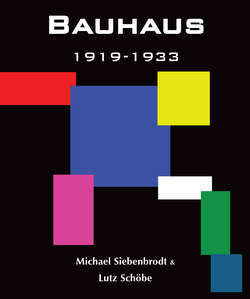Читать книгу Bauhaus. 1919-1933 - Michael Siebenbrodt - Страница 4
На сайте Литреса книга снята с продажи.
History of the Bauhaus
Forerunners, Roots and History
Art School Reform
ОглавлениеThe Art School Reform, which was concerned with the transformation of art academies into unified art schools, based artistic training on the manual trades and a general artistic elementary education. Gropius himself eventually saw the Bauhaus as a part of “reform ideas typical of the time”, and as a new kind of school, whose fundamental pedagogical concept was based on reform ideas.
There were other attempts, before the Bauhaus and parallel to it, to implement in practise the goals of Art School Reform. Among these, the Art School in Frankfurt am Main must be mentioned, as well as the Obrist-Debschitz School in Munich, the Breslau Academy for Arts and Crafts, the Düsseldorf Arts and Crafts School, the Arts and Crafts School Burg Giebichenstein in Halle, the Reimann School and the Itten School in Berlin, the Folkwang School in Essen, the Arts and Crafts School in Bratislava, and finally the Higher Artistic-Technical Workshops (Vkhutemas) in Moscow.
Like the school in Moscow, the Bauhaus was an institution implementing the ideas of the Art School Reform in a unique way, consistently, imaginatively, completely, rigorously and in a sustained manner. According to Gropius, the Bauhaus was a matter of life for the people. In this comprehensive claim, which went far beyond architecture and design, lies inter alia its historical importance.
